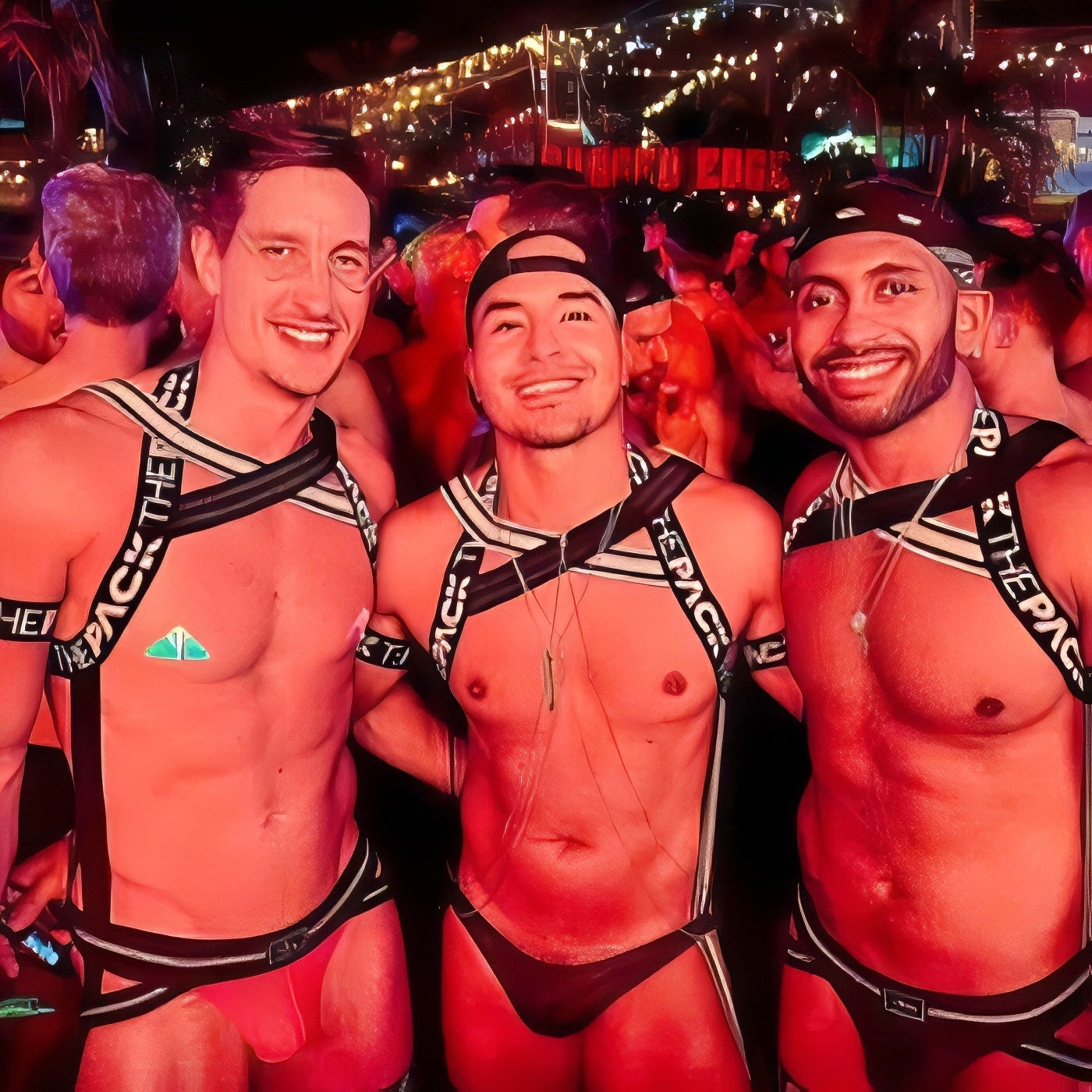
Why We Love Going to Circuit Parties
Circuit parties - the mere mention of the words conjures up images of pulsating lights, thumping music, and a sea of sweaty bodies dancing the night away. But circuit parties are more than just a wild night out; they're a cultural phenomenon that has been a staple of the LGBTQ+ community for decades.
For the uninitiated, circuit parties are large-scale events that originated in the 1980s as a way for gay men to unite and celebrate their identity. Today, they're a global phenomenon, attracting people of all genders and sexualities who share a love of dance music, self-expression, and community.
What about circuit parties that keep us coming back for more? For starters, there's the electric atmosphere. Imagine walking into a darkened room filled with strobing lights and the thumping beat of a legendary D.J. The energy is palpable, and it's impossible not to get caught up in the excitement.
Circuit parties are different from your average night out. They're marathons of music, light, and human connection that can span entire weekends. Born in the wake of the Stonewall riots, these parties emerged as more than just a good time; they became a declaration of existence, a collective shout of "we're here, we're queer, and we're ready to dance until dawn."
It all began in the early 1970s in the pulsating heart of New York City. As the gay rights movement gained momentum, so did the desire for spaces where LGBTQ+ folks could truly let their hair down. Enter places like The Saint, a converted planetarium where stars twinkled above while bodies moved below, and the Paradise Garage, where the legendary Larry Levan spun records that would influence dance music for decades.
But circuit parties aren't just about the music or the venue. They're about creating a temporary autonomous zone where the rules of the outside world don't apply. A utopia where gender norms dissolve under strobe lights, where connection trumps status, and where the only judgment passed is on your ability to keep up with the beat.
The Electric Atmosphere: What Makes Circuit Parties Unique |
Step into a circuit party, and you're immediately enveloped by a symphony for the senses. The air vibrates with sound waves from world-class D.J.s, each transition seamlessly blending one track into the next, creating a musical journey that carries you through the night. Lights dance across the crowd, transforming ordinary humans into mythical creatures on the dance floor. And the energy? It's palpable, electric, contagious.
This isn't just a party; it's performance art on a massive scale. Go-go dancers, often clad in little more than glitter and a smile, gyrate on podiums, embodying the music. Drag queens in sky-high heels and even higher hair lip-sync for their lives, reminding us all that gender is but a construct - and a fabulous one.
But the sense of unity it fosters sets the circuit party atmosphere apart. In a world that often pushes LGBTQ+ individuals to the margins, here, we are the main event. Sweaty shoulder rubs with the stranger beside you aren't an annoyance but an unspoken bond. You don't know their name, their story, or their struggles, but at this moment, you're family.
Freedom of Expression: Self-Discovery at Circuit Parties |
For many, a circuit party is more than just a night out - a rite of passage. In a society that still grapples with accepting the full spectrum of human sexuality and gender expression, these events offer a pressure valve, a place to exhale and be.
Circuit parties have long served as incubators for self-discovery, places where inhibitions fall away under neon lights, revealing the most authentic versions of ourselves. It's not just about shedding clothes (though there's plenty of that) but about societal expectations, internalized shame, and the weight of living in a world not built for us.
Dancing the Night Away: The Joy of Letting Loose |
There's a reason why dancing has been a part of human ritual since immemorial - it's a catharsis in motion. At circuit parties, this ancient tradition takes on new life. As the D.J. drops the beat, a collective exhale ripples through the crowd. Hands raise skyward, hips begin to sway, and suddenly, the stresses of the outside world melt away.
This present-moment awareness, this ability to fully inhabit our bodies and the space around us, makes dancing at circuit parties so intoxicating. In a world of constant notifications and endless to-do lists, the dance floor offers a rare opportunity to unplug - ironically, in one of the most plugged-in environments imaginable.
A Sense of Belonging: Finding Your Tribe at Circuit Parties |
Humans are social creatures, and for LGBTQ+ individuals who have often faced rejection from family, friends, or society at large, finding "your people" can be life-changing. With their carnival-like atmosphere and come-as-you-are ethos, Circuit parties have a knack for facilitating these connections.
These bonds formed on the dance floor often extend far beyond it. Support systems are built, resources are shared, and a network emerges to provide a safety net in times of need. In a community that has faced the devastation of the AIDS crisis and continues to battle discrimination, this sense of solidarity isn't just excellent to have - it's vital.
The Art of Circuit Party Fashion: Express Yourself |
If circuit parties have a cardinal rule, it might be this: there's no such thing as "too much." Fashion here isn't just clothing; it's wearable art, a form of storytelling, a visual shout into the void that says, "This is me!"
But circuit party fashion serves a more profound purpose beyond the feathers and the leather. For many attendees, it's a chance to try on different facets of themselves, to embody fantasies or aspects of their identity that might not be safe or practical to express in daily life. A strait-laced accountant by day might transform into a glittery club kid by night. A soft-spoken teacher could become a leather daddy under the disco ball. It's liberating, it's empowering, and
yes, it's a whole lot of fun.
Conclusion
Why We Keep Coming Back for More
As the last notes fade and the house lights come up (often well into the following afternoon), why did we put ourselves through this? The achy feet, the ringing ears, the inevitable fatigue that comes after dancing for hours. But then you look around - at the smiles, the hugs, the exchanges of numbers and social media handles - and you remember.
We come to circuit parties to lose ourselves and, in doing so, to find each other. In a world that can often feel isolating, especially for those on the margins, these events offer a potent reminder: you are not alone. There is a place for you, a community that will embrace you, a dance floor ready for your unique moves.
Yes, circuit parties have evolved since their disco-era inception. Yes, they've weathered criticism, both from outside the LGBTQ+ community and within it. But their enduring popularity speaks to a fundamental human need - the need to connect, express and celebrate our authentic selves in all their glittery, sweaty, fabulous glory.















